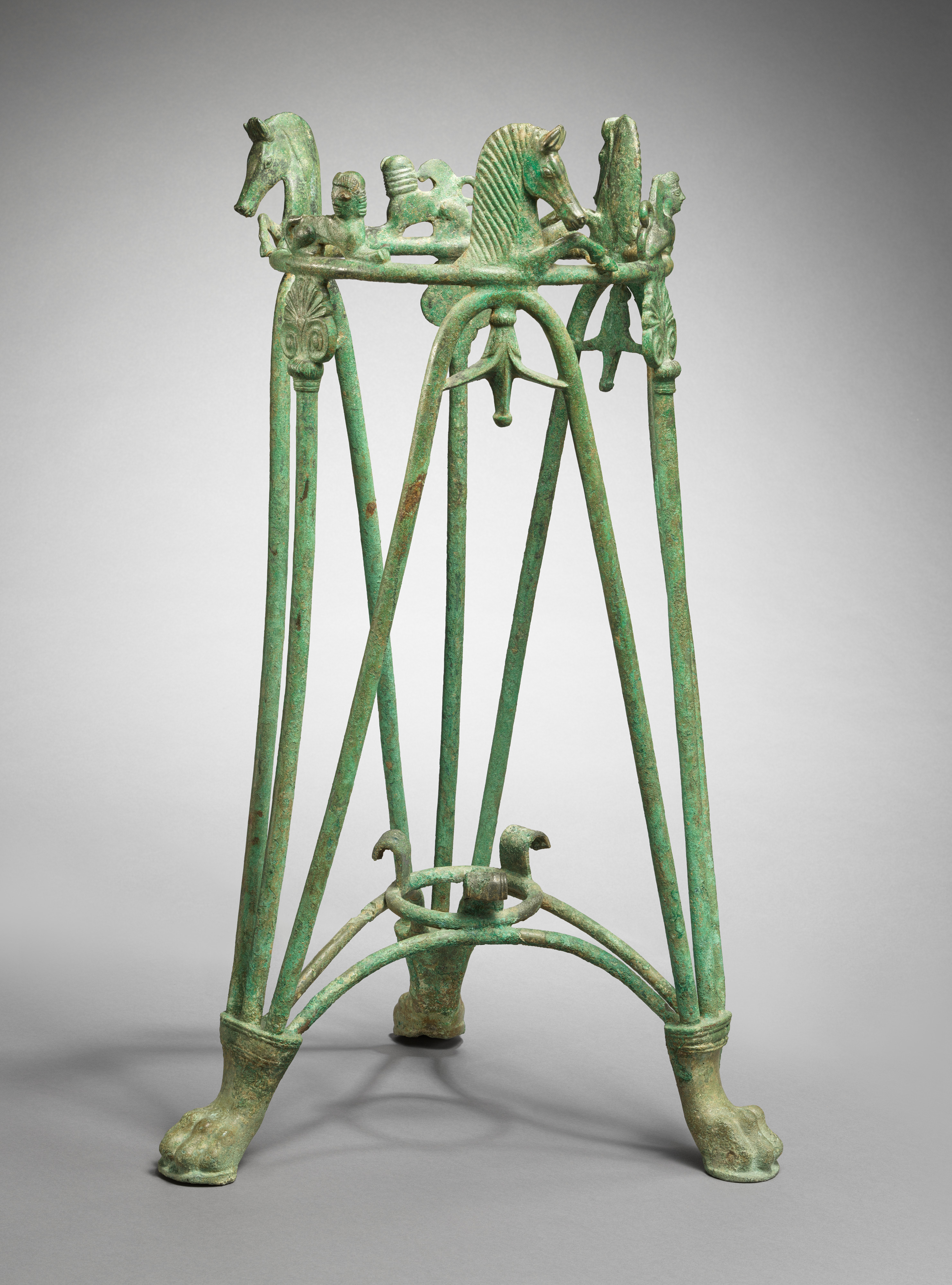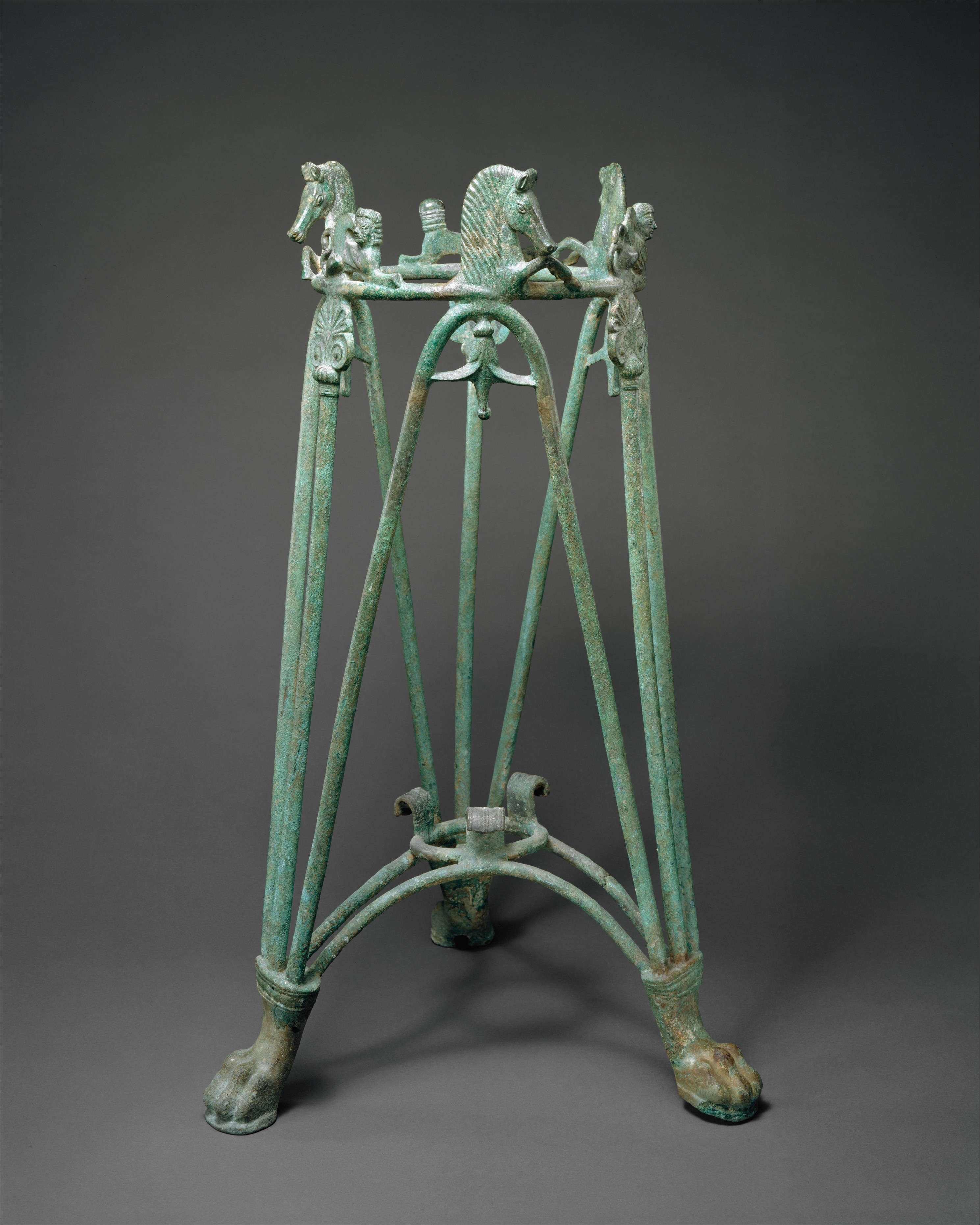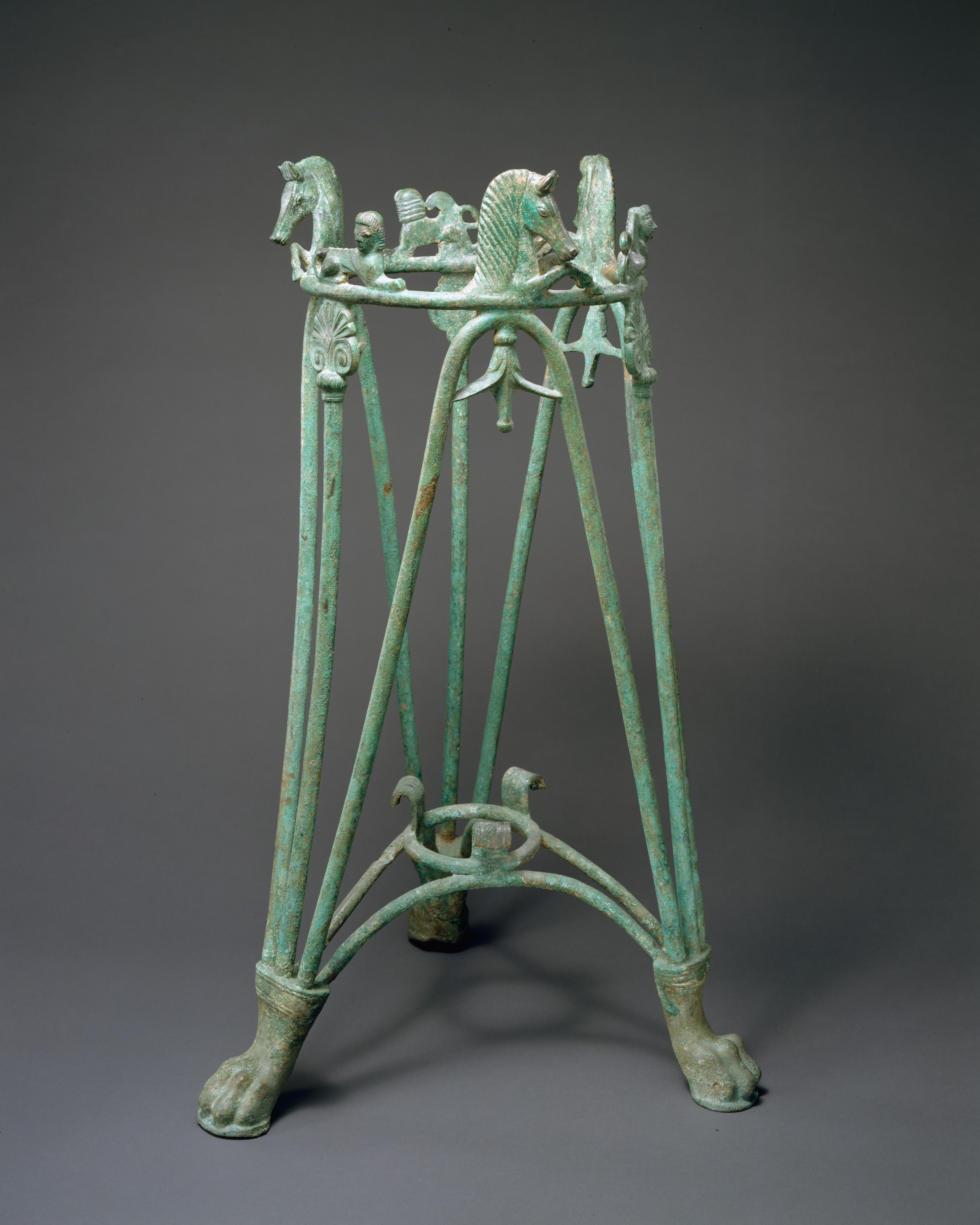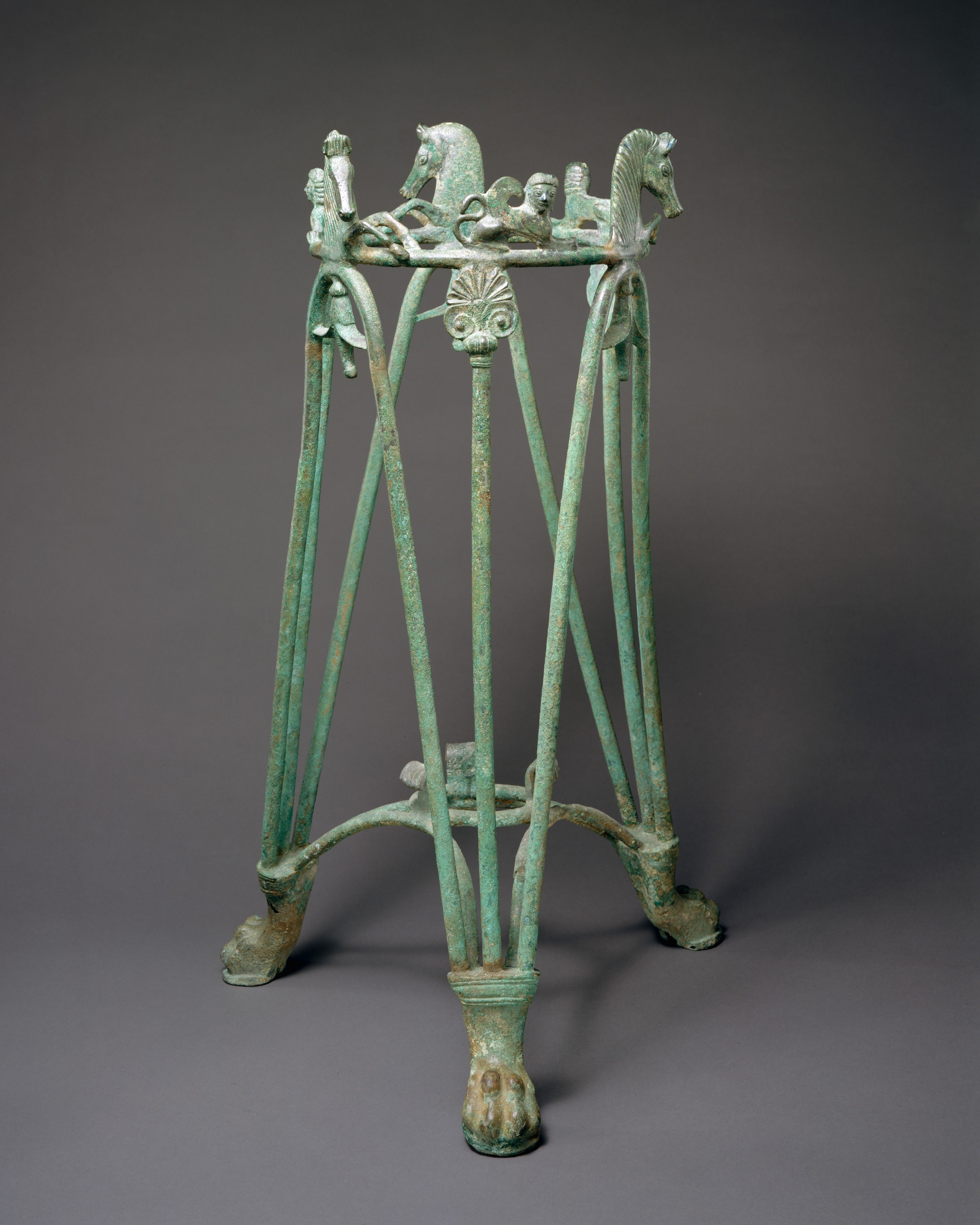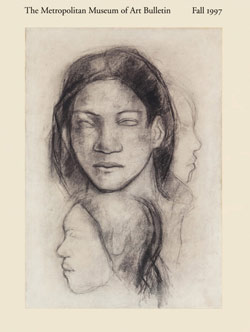Bronze rod tripod stand
The tripod stands on feline-paw feet. Atop the central rod of each leg is a palmette, and above this, on the upper ring, a couchant sphinx. Large horse protomes, which includes the forelegs as well as the head, decorate the upper rim above each of the inverted U-shaped intermediate rods. Below each horse protome is a lotos blossom. The stand would have supported a bronze vessel.
Rod tripod stands have a long history in the eastern Mediterranean region. The earliest examples occurred on Cyprus in the thirteenth century B.C., and the type continued to be produced there and elsewhere in the succeeding centuries. The Cypriot version has a wide distribution: it has been found on Cyprus, Crete, the Cyclades, mainland Greece, Sardinia, and Italy. This stand is an early example of a later, ornate type of Greek manufacturing. Cast in several pieces and then soldered and jointed together, it is a highly accomplished piece of metalwork. A related stand from Metapontom in the Berlin Staatliche Museums is among the few other known complete examples.
Due to rights restrictions, this image cannot be enlarged, viewed at full screen, or downloaded.
This artwork is meant to be viewed from right to left. Scroll left to view more.


